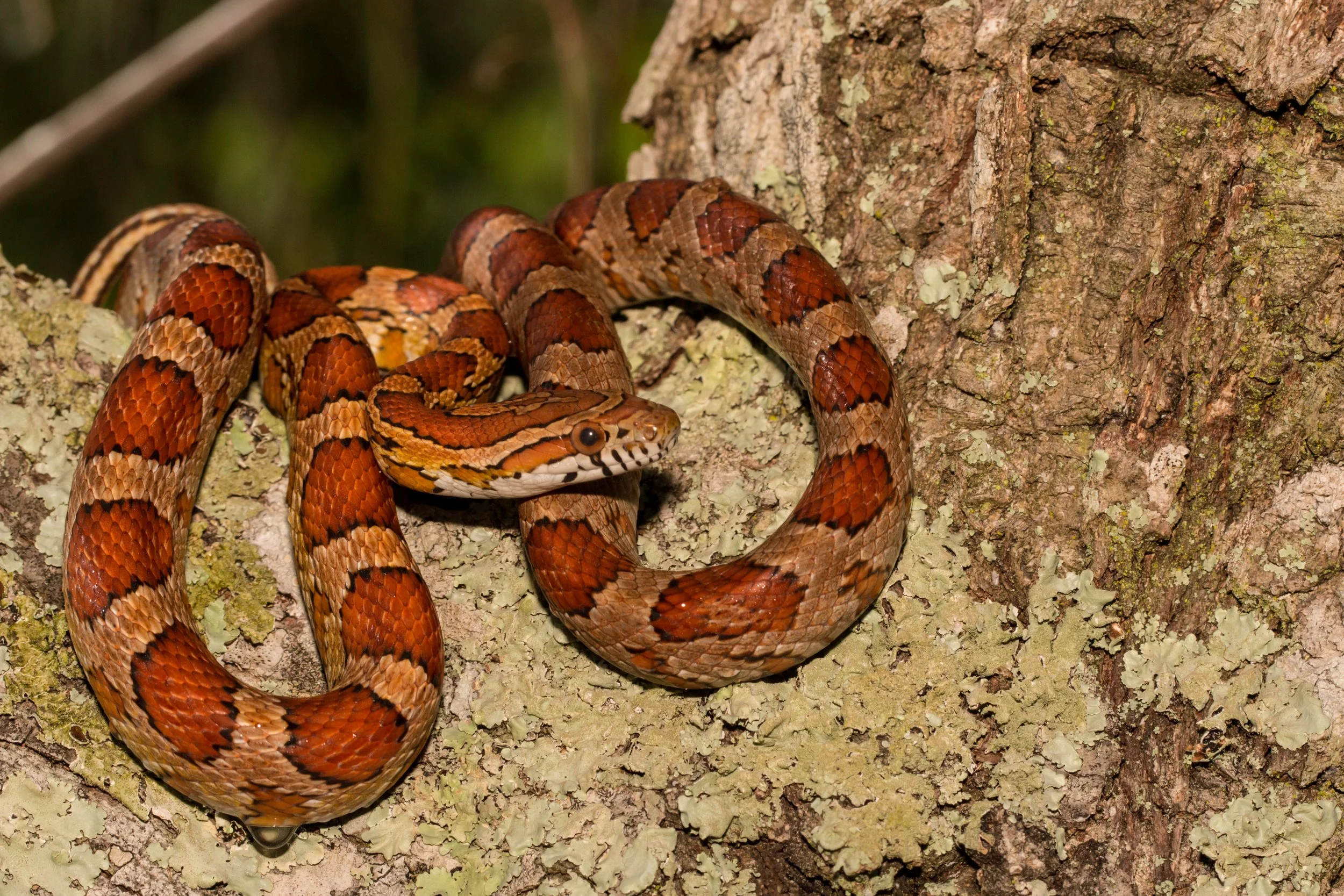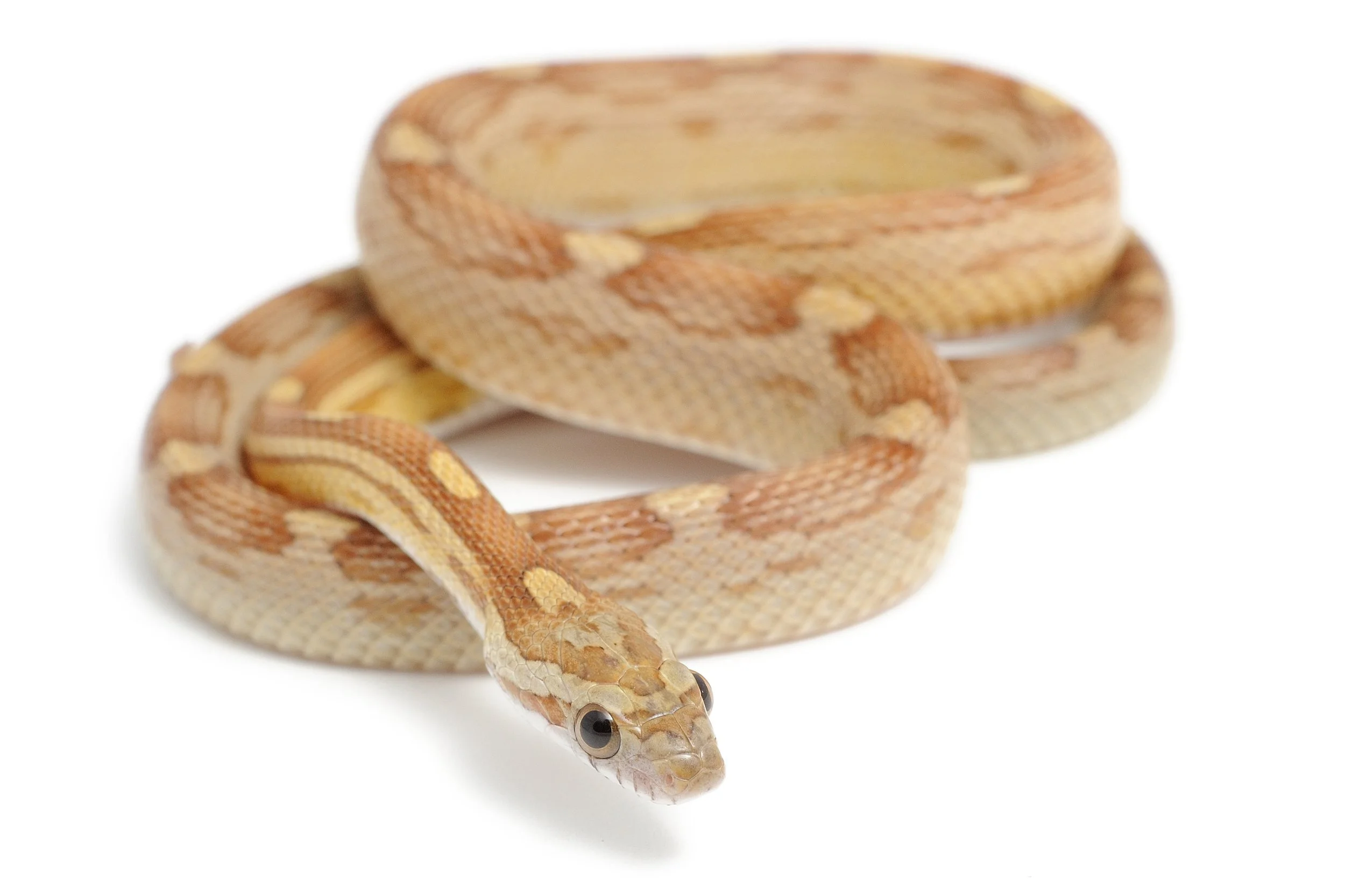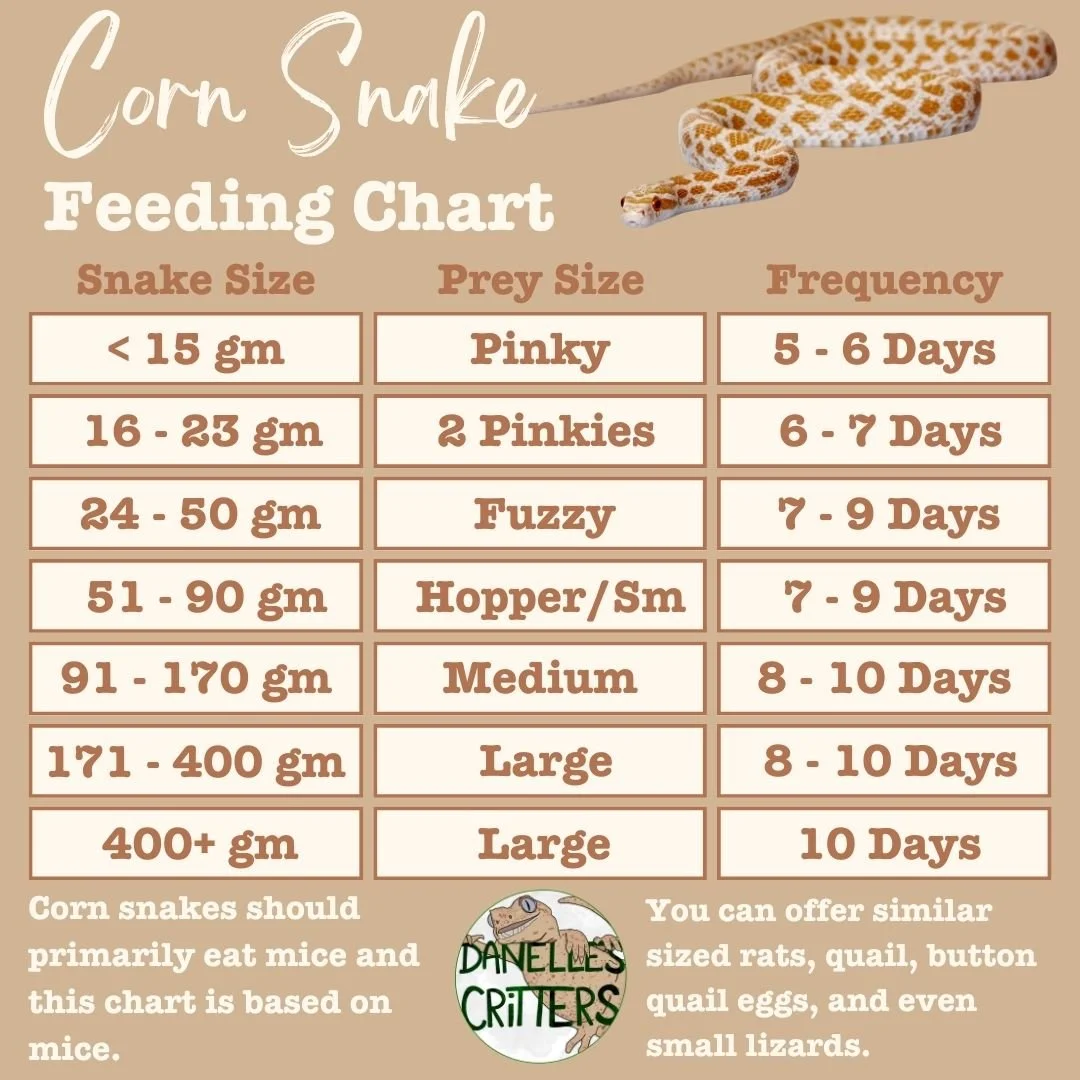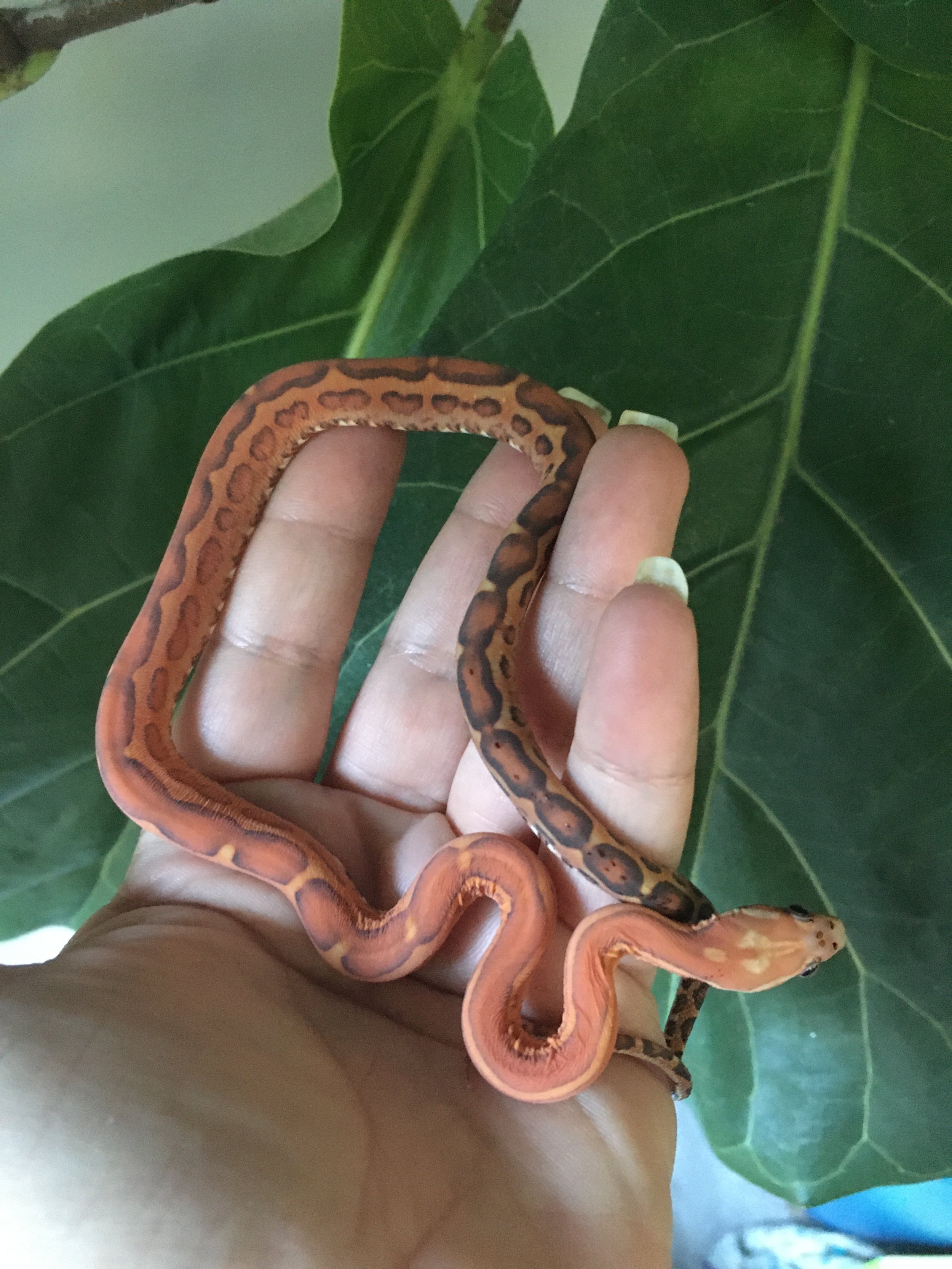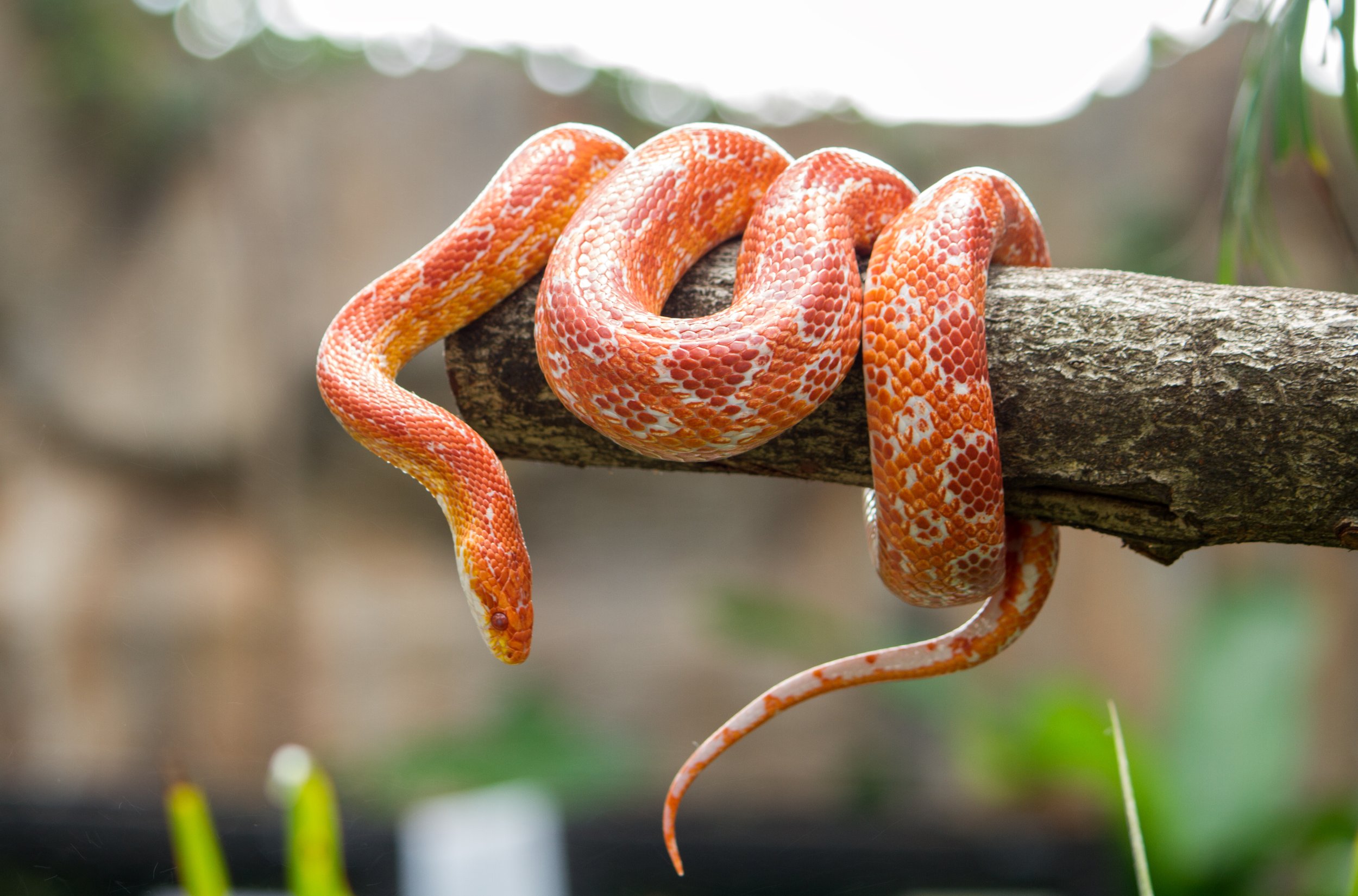
Corn Snake Care Guide
Disclosure: Please note that this article contains affiliate links. This means that if you click on those links and make a purchase, we may earn a commission at no additional cost to you. We only recommend products and services that we have personally used and believe will add value to our readers. Your support through these affiliate links helps us continue to provide valuable content. Thank you for your support!
Welcome to the world of corn snake care! These captivating reptiles make wonderful pets, known for their gentle disposition and stunning appearance. In this guide, we'll provide you with the essential information to ensure your corn snake thrives in your care.
Corn snakes, native to the southeastern United States, have adapted well to captivity. Whether you're a seasoned reptile enthusiast or a newcomer, this guide will help you create a suitable habitat, provide proper nutrition, and understand their unique behaviors.
By following the guidelines in this guide, you'll become a responsible and confident corn snake owner, providing your snake with a happy and healthy life. Let's begin your journey into the world of corn snake care!
Choosing the Right Enclosure
Choose a sturdy glass or plastic terrarium that suits the size and age of your corn snake. Ideally, the combined length and width of the enclosure should exceed the snake's length. For most adult corn snakes, a minimum enclosure size would be 36" by 18" by 18" (or equivalent to a 50-gallon breeder tank). However, keep in mind that bigger is often better. Given that corn snakes are quite active and enjoy moving, exploring, and even climbing, a 4' by 2' by 2' or a 5' by 2' by 2' enclosure will provide your corn snake with a more fulfilling and comfortable living space.
Ensuring your enclosure has adequate ventilation is crucial. You can achieve this through specialized vents or by using a mesh top. However, it's equally important to prioritize escape prevention. Corn snakes are adept escape artists, so it's vital to secure the top and any other entry points effectively. Make sure that any vents are too small for your corn snake to slip through, which is especially critical when they are young, as they can squeeze through surprisingly small openings.
Substrate Selection
Maintaining proper temperature gradients and providing suitable lighting are essential aspects of ensuring your corn snake's health and well-being. Here's what you need to know:
A. Temperature Gradient:
Warm Side: Maintain a warm side temperature of around 85°F (29°C). This warmth aids digestion and promotes activity.
Cool Side: Ensure a cooler side temperature of about 75°F (24°C). This area serves as a retreat for your snake to regulate its body temperature.
B. Heating Methods:
Heat Mat or Pad: Placing a heat mat or pad under one side of the enclosure is an efficient way to create the necessary warmth. Use a thermostat to regulate and maintain consistent temperatures.
Ceramic Heat Emitters: Alternatively, ceramic heat emitters provide heat without emitting light, suitable for maintaining nighttime temperatures.
Halogen Heat Bulb: Another option is to use a heat bulb that will provide light and warmth during the day. You can choose to allow your corn snake to have a temp drop at night or you can provide an alternative heating option for night. Remember that nighttime temp drops are normal since it is common for it to get cooler at night in nature.
C. Lighting:
Natural Light Cycle: While corn snakes don't require UVB lighting, they do benefit from a regular day-night cycle. Use a timer to establish a consistent 12-hour light and 12-hour dark cycle to mimic natural conditions.
Ambient Room Lighting: Ensure the enclosure is not in direct sunlight or overly exposed to artificial light at night, as this can disrupt your snake's natural cycle.
UVB Lighting Options: More and more research suggests that all animals, including snakes benefit from UVB light. You want to provide a UVB option that is recommended for shade dwellers and if providing a UVB light you want it to be on the warm side.
D. Monitoring Temperatures:
Thermometers: Use accurate thermometers, ideally placed on both the warm and cool sides of the enclosure, to monitor temperatures regularly.
Temperature Regulation: Adjust heating elements or wattage as needed, especially during seasonal changes, to maintain the required temperature gradients.
Proper temperature regulation is crucial for your corn snake's digestion, metabolism, and overall health. Monitoring and maintaining the temperature gradients in their enclosure will ensure your snake remains healthy and active.
Ensuring the right humidity levels is crucial for your corn snake's health, especially during shedding. The ideal range for these snakes is 40% to 60%, which coincidentally is also comfortable for people. While this range is manageable in some regions, drier climates might require some adjustments.
Increasing Humidity:
Substrate Selection: Opt for humidity-retaining substrates like cypress mulch, coco husk, or a soil and sand mix. Dampen but avoid soaking the substrate with water.
Ventilation Adjustment: Reduce ventilation, particularly in enclosures with screen tops. Cover portions of the top not housing heating elements or lights to maintain humidity.
Water Dish: Provide a large shallow water dish that allows for evaporation. Regularly clean and refill it to ensure a constant source of humidity.
Humid Hide: Create a specific area in the enclosure with higher humidity, such as a humid hide. Use a plastic container with a hole for entry, filled with moist sphagnum moss, or opt for commercially designed hides with sponges or moss.
Humidifier: In regions where humidity falls below 60%, consider using a room humidifier to maintain suitable levels for both your snake and yourself. You should not use a mister or fogger in a corn snake enclosure though. Instead, use a humidifier in the room.
Regularly monitor humidity levels using a digital hygrometer to ensure your snake's habitat remains within the optimal range.
Maintaining the right humidity is vital for your corn snake's well-being, especially during shedding periods. Striking a balance is essential to create a comfortable and healthy environment without exposing your snake to excessive moisture that could lead to respiratory problems or mold growth.
Providing suitable hide spots and enriching decorations is essential for your corn snake's well-being. These elements contribute to a sense of security, mental stimulation, and a more naturalistic environment:
A. Hide Spots:
Placement: Position at least two hide spots within the enclosure, ensuring one on the warm side and one on the cooler side. This allows your snake to regulate its body temperature effectively.
Types of Hides:
Caves or Half Logs: Mimic natural hiding spots and offer security. It is important to note that half logs are good for clutter, but shouldn’t count as one of the two hides because it doesn’t offer enough security with the the two open ends.
Commercial Hides: Purpose-designed hides with secure entrances and exits.
Size: Hides should be appropriately sized, allowing your snake to snugly fit inside without excessive space.
B. Enriching Decorations:
Branches or Climbing Structures: While corn snakes are not highly arboreal, providing branches or climbing structures adds enrichment and opportunities for climbing.
Substrate Decor: Scatter decorations within the substrate, offering exploration opportunities. Ensure these items are securely placed to prevent accidental injury. This can include everything from leaf litter to stones and bark.
Artificial Plants: Non-toxic artificial plants can enhance the enclosure's visual appeal and provide additional hiding spots.
Burrowing Opportunities: Corn snakes enjoy burrowing, so consider providing a substrate that facilitates this natural behavior.
Regularly clean and inspect hide spots and decorations to ensure they remain safe and conducive to your corn snake's well-being. The right combination of hide spots and decorations will contribute to a happy and mentally stimulated snake.
Maintaining appropriate temperature and humidity levels is paramount for the well-being of your corn snake. Here's a comprehensive guide:
A. Temperature Gradient:
Warm Side: Keep the warm side of the enclosure around 85°F (29°C). This temperature promotes digestion and encourages overall activity.
Cool Side: Maintain a cooler side temperature of about 75°F (24°C) to allow your snake to regulate its body temperature effectively.
B. Heating Methods:
Heat Mat or Pad: Place a heat mat or pad beneath one side of the enclosure. Use a thermostat to regulate and maintain consistent temperatures. This is an excellent option for bin enclosures, but other heating options are better for glass or PVC enclosures.
Ceramic Heat Emitters: Alternatively, use ceramic heat emitters to provide warmth without emitting light. This is especially beneficial for maintaining nighttime temperatures.
Combining Light and Heat: You can also use a basking bulb to combine light and heat. This option works well if your home is in the 70s because you can allow the light to turn off at night and then have a night temperature drop. There are a lot of advantages to using light for heat because research shows that the radiation that the lights put off is good for reptile health.
C. Lighting:
Natural Light Cycle: While corn snakes do not require UVB lighting, establish a regular day-night cycle using a timer for 12 hours of light and 12 hours of darkness.
Ambient Room Lighting: Avoid direct sunlight or excessive artificial light exposure at night, as this can disrupt the snake's natural cycle.
D. Monitoring Temperatures:
Thermometers: Place accurate thermometers on both the warm and cool sides of the enclosure. Regularly monitor temperatures to ensure they stay within the optimal range.
Temperature Regulation: Adjust heating elements or wattage as needed, particularly during seasonal changes, to maintain the required temperature gradients.
Temp Gun: It is also a good idea to use a temp gun to keep track of the basking spot and other surface temps.
E. Humidity Management:
Optimal Range: Aim for a humidity range of 40% to 60% within the enclosure.
Increasing Humidity:
Substrate: Use humidity-retaining substrates like cypress mulch or a soil and sand mix. Dampen the substrate without making it excessively wet.
Reduced Ventilation: Decrease ventilation, especially in enclosures with screen tops, by covering parts of the top without heating elements or lights.
Water Dish: Provide a large, shallow water dish to allow for evaporation. Keep it clean and regularly filled.
Humid Hide: Create a specific area with higher humidity, such as a humid hide, using a plastic container with moist sphagnum moss.
Humidity Monitoring:
Hygrometers: Regularly use digital hygrometers to monitor humidity levels and make necessary adjustments. The best one available is the Govee hygrometers because they are durable and they will send the information to your phone. Having one on both sides of your enclosure will let you keep track of the humidity and the ambient temperature.
Maintaining optimal temperature and humidity conditions is crucial for your corn snake's digestion, metabolism, and overall health. Regular monitoring and adjustments will contribute to a comfortable and thriving environment.
Ensuring a proper feeding schedule and nutrition is crucial for your corn snake's overall health and well-being. Here's what you need to know:
A. Feeding Schedule:
Frequency: Feed your corn snake appropriately sized meals every 5 to 7 days for juveniles and 7 to 10 days for adults. Adjust based on individual metabolism and activity level.
Consistency: Maintain a consistent feeding schedule to establish a routine and reduce stress.
B. Suitable Prey Items:
Mice: Provide frozen-thawed mice as primary food sources. Choose prey items that are approximately the same width to 1.5x the width of the snake's widest part.
Proper Sizing: Ensure prey is appropriately sized, preventing overfeeding or potential regurgitation. A small bulge in the snake's body after swallowing indicates an appropriately sized meal.
Other Food Options: To keep your corn snake healthy you will want to feed mice most often, but you can also feed rats, quail, button quail eggs, and or small lizards. In any case, you want to make sure that the prey size is appropriate for your snake.
C. Handling and Feeding Techniques:
Thawing Prey: Frozen thawed prey is a safer option for your snake because it will never wound your snake. Thaw frozen prey items thoroughly before feeding. Use warm water or a designated refrigerator for safe thawing. Gently warm the mouse with warm water, a heat lamp, or a hair dryer.
Handling Precautions: Avoid handling your snake immediately after feeding to reduce stress and minimize the risk of regurgitation. This period should be at least 24 hours, but 48 hours is better.
Monitor Feeding Response: If the snake refuses food or shows disinterest, ensure environmental conditions are suitable, and observe behavior. If your corn snake refuses more than one meal consider taking it to the vet.
D. Monitoring Feeding Habits:
Weight Management: Regularly monitor your snake's weight to ensure healthy growth. Adjust feeding frequency and prey size accordingly.
Regurgitation: If your snake regurgitates, allow two weeks to heal before feeding again. Seek veterinary advice if regurgitation persists.
Hydration: Ensure your snake has access to fresh water at all times. Hydration is essential for digestion and overall health.
Providing a consistent and balanced diet is fundamental to your corn snake's longevity and vitality. Regular monitoring and adjustments to the feeding regimen contribute to a healthy and contented snake.
The chart below is a basic guide. It is only meant as a guide and doesn’t need to be a difficult process. You don’t have to weigh the mice every feeding or your snake every feeding. Eyeballing the size of the prey item and the snake to make sure it is about 1 to 1.5 times the widest part of the snake.
Proper handling is essential for building trust and promoting a positive relationship with your corn snake. Here's a guide to handling and socialization:
A. Proper Handling Techniques:
Gentle Approach: Approach your snake calmly and confidently. Make slow and deliberate movements to avoid startling them. Scooping them from the side will reduce stress because many predators will come from the top.
Supportive Handling: Always support the snake's body, especially its midsection, to provide a sense of security. Avoid squeezing or gripping tightly. Let them move through your hands rather than trying to restrain them.
Handwashing: Wash your hands before handling to remove any scents that might cause stress.
B. Handling Frequency:
Start Slow: Begin with short handling sessions, gradually increasing the duration as your snake becomes more accustomed.
Frequency: Handle your snake at least 1-2 times a week to promote familiarity and reduce stress. Avoid handling during shedding or after feeding. Always watch for signs of stress in your snake and try and end your handling session on a positive note. You can increase the frequency of handling over time as long as the animal doesn’t seem stressed.
C. Signs of Stress and Aggression:
Body Language: Learn to recognize signs of stress, such as hissing, rapid tongue flicking or no tongue flicking, or defensive postures.
Respect Boundaries: If your snake shows signs of stress or aggression, respect their boundaries and allow them time to acclimate. That being said, if your snake bites you and you put it right back then it will learn that biting will end handling sessions. If possible, extend the handling session just a little longer to try and calm the snake and end on a positive note for the snake.
D. Socializing Your Snake:
Safe Exploration: Allow your snake to explore a secure and controlled environment outside of its enclosure for mental stimulation.
Multiple Handlers: If possible, involve multiple handlers to accustom your snake to different people and handling styles.
Positive: Watch your snake’s body language and tongue flicking. Long and slow tongue flicks with a curious posture are good while the absence of tongue flicking or rapid tongue flicking is bad. You want to try and end your handling session while your snake still feels good about the interaction.
E. Age Considerations:
Handling Hatchlings: Be particularly gentle with hatchlings. Short, frequent sessions are more beneficial than prolonged handling.
Adult Snakes: Adult corn snakes are generally more tolerant of handling but still require care and attention to their individual preferences.
Handling and socialization contribute to a well-adjusted and comfortable corn snake. Patience, respect for their cues, and positive reinforcement will foster a trusting relationship, making your snake a delightful companion in your reptile-keeping journey.
In conclusion, providing optimal care for your corn snake involves a delicate balance of meeting their physical, environmental, and psychological needs. By adhering to the guidelines outlined in this comprehensive care guide, you embark on a journey to create a thriving and contented life for your scaly companion.
From establishing suitable housing and temperature gradients to navigating handling, your commitment to understanding and meeting your corn snake's requirements is the key to their well-being. Regular monitoring, thoughtful handling, and a dedication to ongoing education will foster a strong bond between you and your snake.
Remember, each corn snake is unique, and adjustments to care routines may be necessary based on individual preferences and health considerations. Consultation with a reptile veterinarian is invaluable in ensuring your snake's health and promptly addressing any concerns.
With proper care, attention, and respect for their natural behaviors, your corn snake can thrive, providing you with years of joy and companionship. May your journey into corn snake care be fulfilling, and rewarding, and contribute to the well-being of your captivating reptilian friend.
Choosing the right substrate is crucial for your corn snake's well-being. It not only serves as bedding but also plays a role in maintaining proper humidity levels, which are essential for your pet's health. Here's a breakdown of various substrate options:
Aspen Shavings:
Popular for allowing burrowing and mirroring natural habitat behaviors. While it's a common choice, opinions on its suitability vary. Aspen doesn't retain humidity well and might not be ideal if household humidity levels are below 50%.
Cypress Mulch:
Good moisture retention and mold prevention. Be cautious to avoid excessive moisture, as this could lead to scale rot.
Paper Towels or Newspaper:
Easy to clean but lack the natural feel and burrowing opportunities. They are, however, useful in the initial months with a new snake, allowing observation for mites and monitoring eating and excretion.
Coconut Husk Bedding:
Offers decent moisture retention but doesn't provide optimal burrowing opportunities. It is easy to clean though and makes for an easy choice.
Soil and Sand Mix:
Increasingly favored by reptile keepers, a mix of 70% organic topsoil and 30% play sand is being used due to reduced impaction concerns. Ensure the soil is fertilizer-free, and opt for round-grain play sand rather than building sands to minimize impaction risks.
Substrate to Avoid:
Cedar or Pine Shavings: These contain oils harmful to your snake's respiratory system.
Layer Thickness:
Maintain a substrate layer of 2 to 4 inches, allowing your snake to burrow comfortably without posing any safety risks.
Cleaning and Replacement:
Regularly remove soiled substrate to uphold cleanliness. Replace the entire substrate when needed, typically every 4-6 weeks, depending on cleanliness and odor.
When introducing new substrates, closely observe your snake's behavior and health to ensure they're not experiencing any adverse reactions. The right substrate will create a comfortable, natural environment for your corn snake while assisting in humidity regulation.

